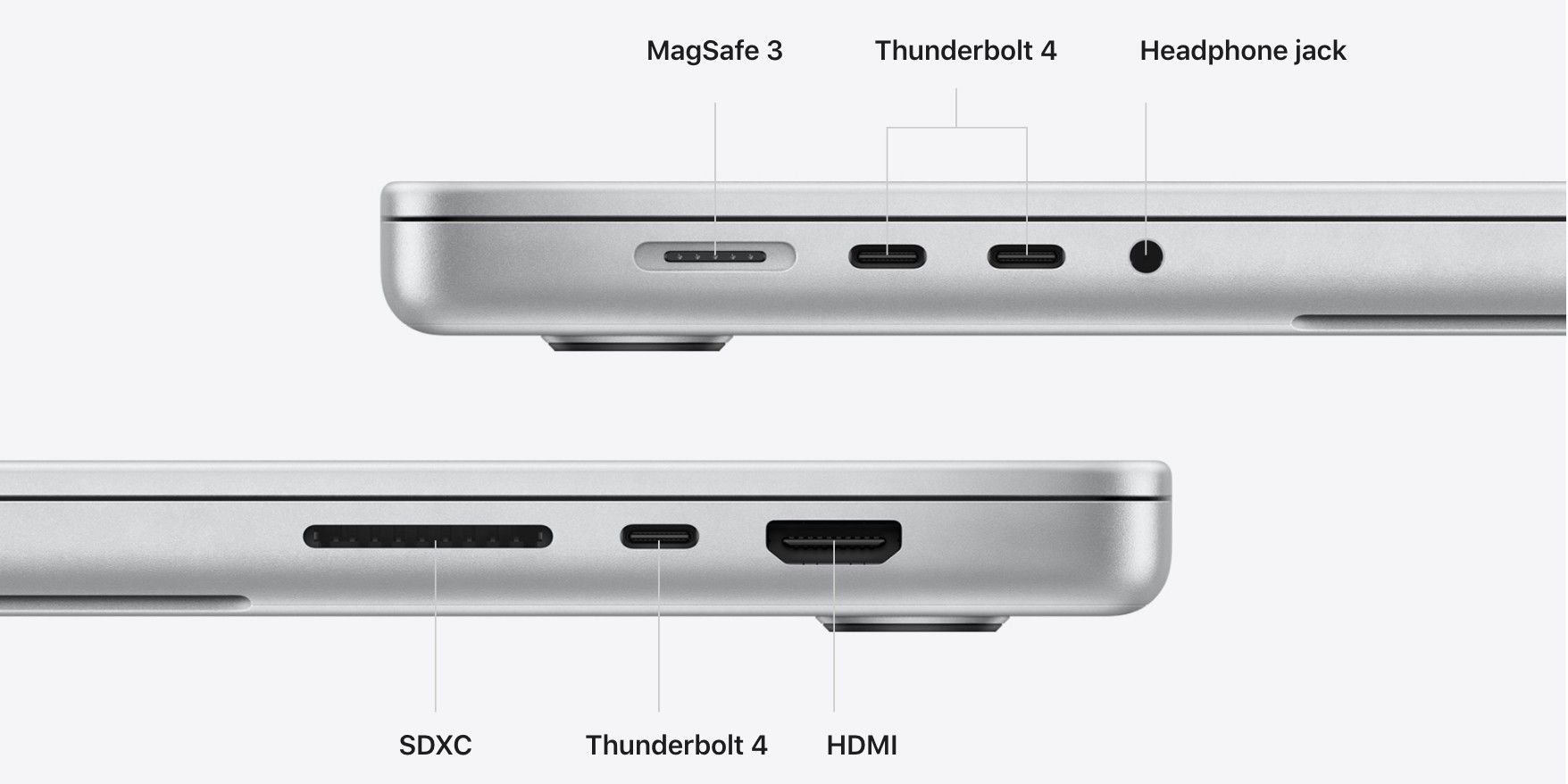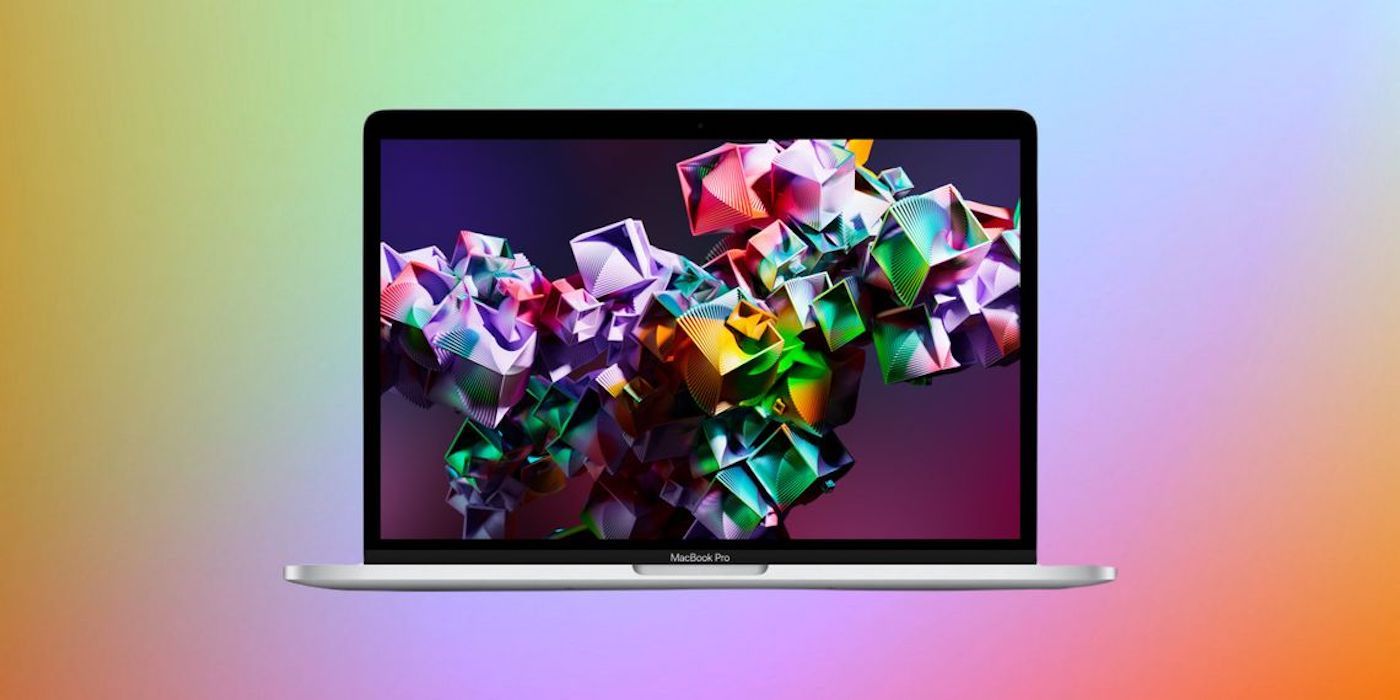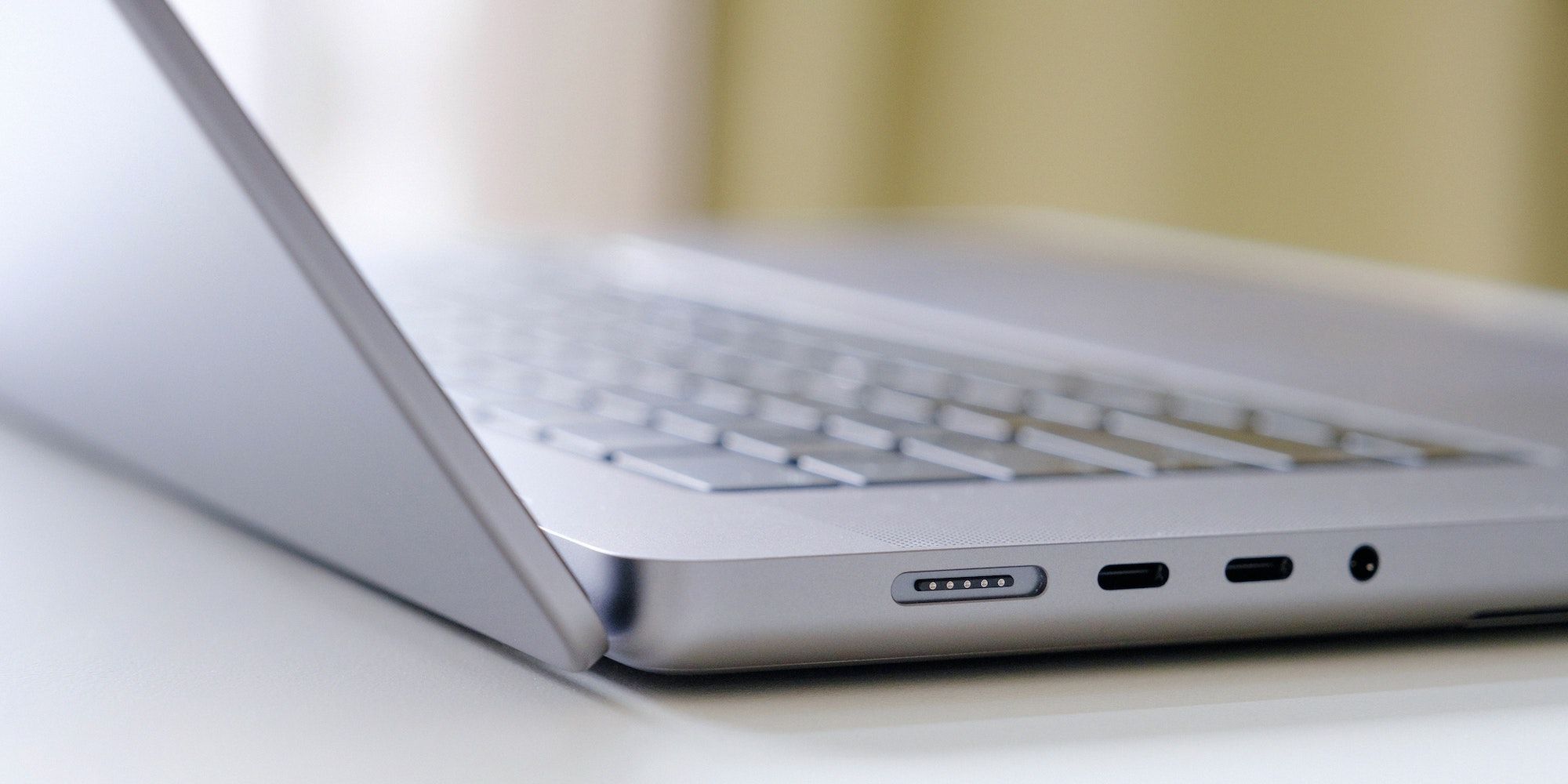Apple’s 14-inch and 16-inch MacBook Pro laptops come with support for both MagSafe and USB-C charging, but which one is the better option? MagSafe was the default charging port on MacBooks for several years, until Apple got rid of it in 2017. Surprisingly, the company reintroduced MagSafe with the 14-inch and 16-inch MacBook Pro models launched in 2021, and continued the tradition with the 2023 models. While the Thunderbolt 4 ports (USB-C) can also be used for charging, the charging speeds will vary depending on the port used.
The 14-inch and 16-inch MacBook Pro models come with different power adapters, depending on the configuration. As per Apple’s website, the wattage varies between 67W, 96W, and 140W, and all models ship with a USB-C to MagSafe 3 cable. This means the power brick supports a USB-C input, allowing users to buy a compatible USB-C cable and charge their laptops through the Thunderbolt ports if they prefer.
RELATED: How To Change Your MacBook Pro Display’s Refresh Rate
MagSafe Vs. USB-C: Which Charges Faster?

The 14-inch MacBook Pro with an M1 Pro 8-Core CPU/M2 Pro 10‑core CPU ships with a 67W power adapter and MagSafe 3 cable, while the variant with an M1 Pro 10-core CPU or M1 Max chip/ M2 Pro 12‑core CPU or M2 Max chip ships with a 96W power adapter and MagSafe 3 cable. Apple says that the 67W power adapter won’t fast charge the MacBook Pro. Those who want fast charging (0 to 50 percent in about 30 minutes) can pay an extra $20 at checkout for a 96W power adapter. Alternatively, buyers can use a USB-C to USB-C cable and a Power Delivery charger that can output 100W speeds to fast-charge the laptop via the Thunderbolt 4 port.
The 16-inch MacBook Pro (2021) is available in M1 Pro and M1 Max versions, while the 2023 models come in M2 Pro and M2 Max versions. All configurations ship with a 140W USB-C power adapter. This means the laptop will charge at the maximum possible power rating with the bundled MagSafe cable and charger. However, when charging via the Thunderbolt 4 port, the charging speed will not be as fast. The reason for this is Thunderbolt 4 has a maximum power rating of 100W, which is lower than what the 140W MagSafe 3 offers. Therefore, using a USB-C to USB-C cable and the included 140W power adapter or a third-party 100W USB-C PD power adapter to charge via the Thunderbolt 4 port won’t be as fast as MagSafe charging.
Does The 13-Inch MacBook Pro (2022) Have MagSafe?

Apple launched the 13-inch MacBook Pro alongside the MacBook Air in late 2022. Surprisingly, Apple didn’t include a MagSafe charging port on the MacBook Pro, but added one on the MacBook Air instead. As a result, the 13-inch MacBook Pro ships with a 67W USB-C power adapter and USB-C to USB-C charging cable. Users can plug the cable into either of the Thunderbolt 4 ports to charge their laptop, but they won’t be able to take advantage of fast-charging speeds, even if they use a higher capacity power adapter.
In contrast, the 13-inch MacBook Air (2022) ships with a 30W/35W Dual USB-C port power adapter and USB-C to MagSafe cable, depending on the model. Buyers can fast charge the laptop (50 percent charge in 30 minutes) using a 67W, 96W, or 140W power adapter, which will need to be purchased separately.
Charge Your MacBook Pro With USB-C

Both the 14-inch and 16-inch MacBook Pro can be charged using either of the Thunderbolt 4 (USB-C) ports. Apple notes that the MacBook Pro charges over only one port at a time, which means users shouldn’t plug in two USB-C charging cables or a USB-C cable alongside the MagSafe cable. In case the MacBook Pro doesn’t charge over USB-C, the first thing to do is check the charging brick. If using the supplied charging brick, first check if the Mac is charging via the MagSafe port. If that doesn’t work, Apple recommends shutting down the MacBook Pro, closing the display for 30 seconds, and then opening it and trying to charge it again. If the laptop charges normally, however, it means the problem is with the USB-C cable being used.
Not all USB-C cables can charge a MacBook Pro. It’s important to ensure that a USB-C cable that’s used to charge a low-power accessory isn’t being plugged into a high-wattage charger. The safest bet is to buy a USB-C cable specifically for charging the MacBook Pro. While Apple sells several versions of these cables on its official site, the prices tend to be on the higher side. There are a few good third-party options from brands such as Amazon Basics and Anker, and it’s best to buy a cable that supports 100W PD to get the fastest-charging speeds possible. In case USB-C charging doesn’t work with even a compatible cable however, there might be a problem with the charging ports, in which case it’s best to take the MacBook Pro in for service.




